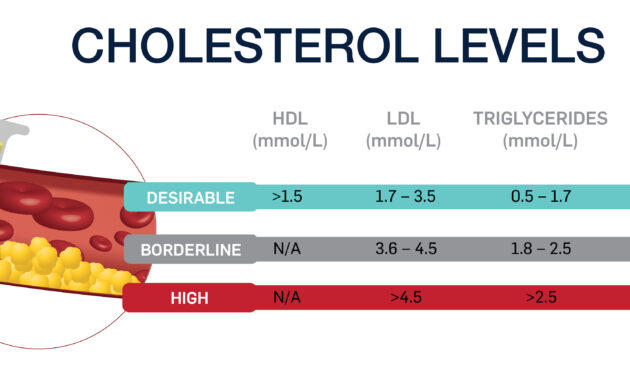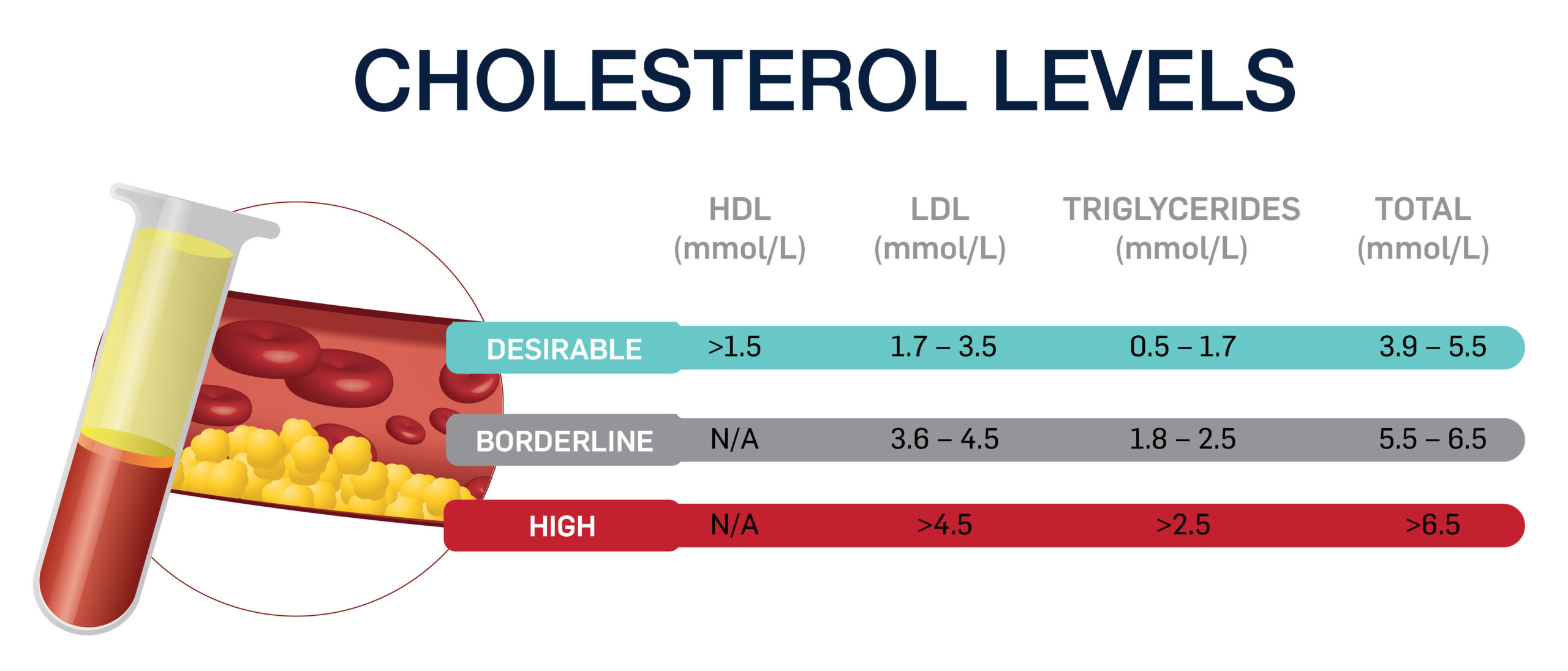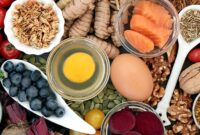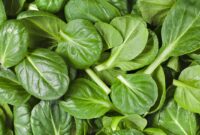Lowering LDL (low-density lipoprotein) cholesterol is vital for maintaining heart health and preventing cardiovascular diseases.
Often referred to as “bad” cholesterol, LDL can lead to plaque buildup in the arteries, increasing the risk of heart attack and stroke.
Fortunately, several lifestyle changes, dietary adjustments, and medical treatments can help manage LDL cholesterol levels.
This guide covers actionable steps to reduce LDL cholesterol, explaining each method in detail.
1. Dietary Changes
Diet plays a crucial role in managing cholesterol levels, particularly LDL. Here’s how specific dietary adjustments can help:
Read also: Comprehensive Guide on LDL Cholesterol Calculation
1.1. Increase Soluble Fiber Intake
Soluble fiber binds with cholesterol particles in the digestive system, reducing its absorption into the bloodstream. Foods rich in soluble fiber include oats, barley, beans, lentils, apples, and citrus fruits.
- Mechanism: Soluble fiber forms a gel-like substance that traps cholesterol, which is then excreted rather than absorbed.
- Impact: Studies show that increasing soluble fiber intake can reduce LDL levels by 5-10% in as little as six weeks.
1.2. Choose Healthy Fats
Not all fats are bad. Replacing saturated fats (found in red meat, butter, and full-fat dairy) with unsaturated fats can help lower cholesterol. Healthy fats are found in foods like olive oil, avocados, nuts, and fatty fish.
- Mechanism: Unsaturated fats increase the liver’s ability to remove LDL cholesterol from the blood.
- Impact: Consuming polyunsaturated fats can reduce LDL by 10-15%.
1.3. Limit Dietary Cholesterol
While dietary cholesterol has a smaller impact on blood cholesterol than once thought, reducing intake from sources like eggs, shellfish, and organ meats can still help some people manage LDL.
- Mechanism: Limiting high-cholesterol foods reduces the cholesterol available for absorption in the gut.
- Impact: For sensitive individuals, lowering dietary cholesterol can result in a 5-10% reduction in LDL levels.
1.4. Incorporate Plant Sterols and Stanols
Plant sterols and stanols are naturally occurring compounds that block the absorption of cholesterol in the gut. They are found in small amounts in foods like nuts, seeds, and legumes, but are also added to some margarine spreads and dairy alternatives.
- Mechanism: These compounds compete with cholesterol for absorption in the digestive system, thereby lowering LDL levels.
- Impact: Regular consumption of 2 grams of plant sterols/stanols per day can lower cholesterol by 5-15%.
Read also:
1. How Long to Walk to Prevent Diabetes | Inspira Health
2. How to Easily Calculate Your BMI – Inspira Health
3. 50 List of High Cholesterol foods | Inspira Health
2. Lifestyle Modifications
In addition to dietary changes, certain lifestyle habits can significantly impact LDL cholesterol levels:
2.1. Exercise Regularly
Physical activity increases HDL (high-density lipoprotein, or “good” cholesterol) and improves the liver’s efficiency in removing LDL cholesterol from the bloodstream.
- Recommended Activity: Aim for at least 150 minutes of moderate-intensity exercise (such as brisk walking or swimming) or 75 minutes of vigorous activity (such as running or cycling) per week.
- Impact: Regular exercise can lower cholesterol by 5-10%.
2.2. Maintain a Healthy Weight
Being overweight or obese often leads to higher LDL cholesterol levels. Losing even a small amount of weight (5-10% of body weight) can have a positive impact on LDL.
- Mechanism: Weight loss reduces the amount of fat circulating in the bloodstream, which in turn lowers LDL levels.
- Impact: Weight loss of 10 pounds can lead to a 5-8% reduction in LDL cholesterol.
2.3. Quit Smoking
Smoking damages blood vessels and increases cholesterol while decreasing HDL. Quitting smoking can reverse these effects and improve overall cardiovascular health.
- Impact: Within a year of quitting, LDL cholesterol levels decrease, and the risk of heart disease drops significantly.
3. Medical Interventions
For individuals who are unable to lower cholesterol through diet and lifestyle changes alone, medical treatments may be necessary:
3.1. Statins
- Mechanism: Statins inhibit the enzyme HMG-CoA reductase, which is crucial for cholesterol synthesis.
- Impact: Statins can lower cholesterol by 30-50%, depending on the dosage.
Statins are one of the most commonly prescribed medications for lowering cholesterol. They work by blocking a substance your liver needs to produce cholesterol, which reduces the amount of LDL circulating in the blood.
3.2. Ezetimibe
Ezetimibe is a medication that reduces the absorption of cholesterol from food. It is often prescribed alongside statins for those who need more aggressive LDL reduction.
- Mechanism: Ezetimibe blocks a specific protein in the small intestine responsible for cholesterol absorption.
- Impact: This medication can reduce LDL cholesterol by 18-25%.
3.3. PCSK9 Inhibitors
For those with genetically high cholesterol or who do not respond to statins, PCSK9 inhibitors may be prescribed. These injectable medications help the liver remove more LDL cholesterol from the bloodstream.
- Mechanism: PCSK9 inhibitors prevent the degradation of LDL receptors in the liver, which increases the clearance of LDL from the blood.
- Impact: These drugs can reduce LDL levels by up to 60%.
4. Monitor and Test Cholesterol Levels
Regularly monitoring cholesterol levels is essential for tracking progress and adjusting treatment strategies. A lipid panel measures LDL, HDL, and total cholesterol, as well as triglycerides.
- Recommended Frequency: Most adults should have their cholesterol levels checked every 4-6 years, but more frequent monitoring may be necessary for those with high cholesterol or other risk factors.
- Impact: Routine monitoring helps ensure that lifestyle and medication efforts are effectively lowering LDL cholesterol.
5. The Role of Genetics
While diet and lifestyle are significant factors in cholesterol management, genetics also play a crucial role. Some people may have familial hypercholesterolemia, a genetic condition that causes very high LDL cholesterol levels. In such cases, medication is usually necessary, and lifestyle changes alone may not be sufficient.
- Mechanism: Mutations in genes involved in cholesterol metabolism (such as the LDLR gene) lead to reduced clearance of LDL from the bloodstream.
- Impact: Without treatment, individuals with familial hypercholesterolemia are at a significantly higher risk of heart disease.
Conclusion
Lowering LDL cholesterol is crucial for reducing the risk of heart disease and stroke. By making strategic dietary changes, incorporating regular exercise, and potentially using medication, individuals can effectively manage their cholesterol levels. Regular testing and a proactive approach to cardiovascular health can lead to long-term benefits and a healthier life.
By following the steps outlined in this guide, you can take control of your cholesterol levels and improve your heart health. Always consult a healthcare professional before making significant changes to your diet, exercise routine, or medications.






